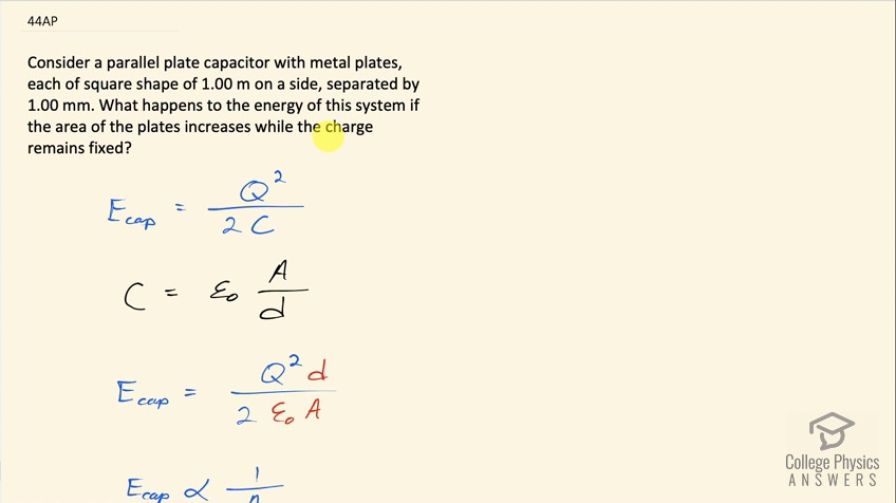Question
Consider a parallel plate capacitor with metal plates, each of square shape of 1.00 m on a side, separated by 1.00 mm. What happens to the energy of this system if the area of the plates increases while the charge remains fixed?
Final Answer
As area increases energy stored decreases by the same factor.
Solution video
OpenStax College Physics for AP® Courses, Chapter 19, Problem 44 (Test Prep for AP® Courses)

vote with a rating of
votes with an average rating of
.
Video Transcript
This is College Physics Answers with Shaun Dychko. Given a parallel plate capacitor, the area is going to be increasing while the charge remains constant and what happens to the energy of the systems? We are given some details about the size of the capacitor but that doesn't really matter. So the energy stored in a capacitor is its charge squared divided by 2 times its capacitance and the capacitance of a parallel plate capacitor is the permittivity of the material between the plates times the area of each plate divided by the separation between the plates d and since we are told nothing about the material between the plates, we'll have to assume it's just vacuum or it's air, which essentially has the same permittivity as a vacuum to the precision that we are going to be concerned with. So we substitute in for < i>C here by multiplying by the reciprocal of this fraction because it's kind of messy to have a fraction divided by a fraction. So I am going to multiply Q squared over 2 by the reciprocal of this which is d over ε naughtA. So everything here stays constant... the charge is constant, the separation between plates is constant so all these things are constant and so we can say that the energy stored in a capacitor is proportional to 1 over the area so energy is inversely proportional to area in other words. So this means that as area increases, the energy stored will decrease by the same factor. So if area doubles, the energy stored in a capacitor will be multiplied by a half.